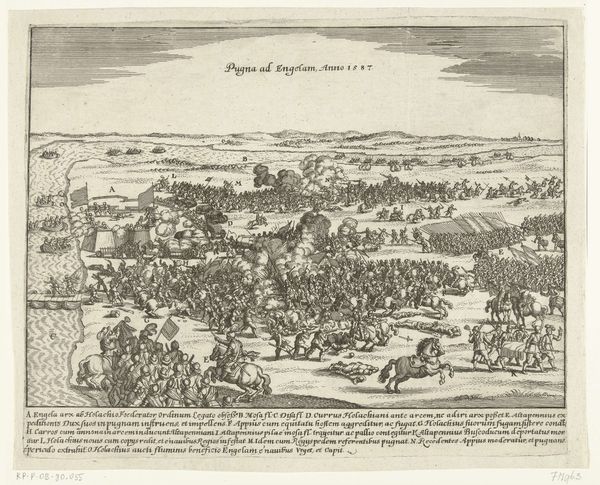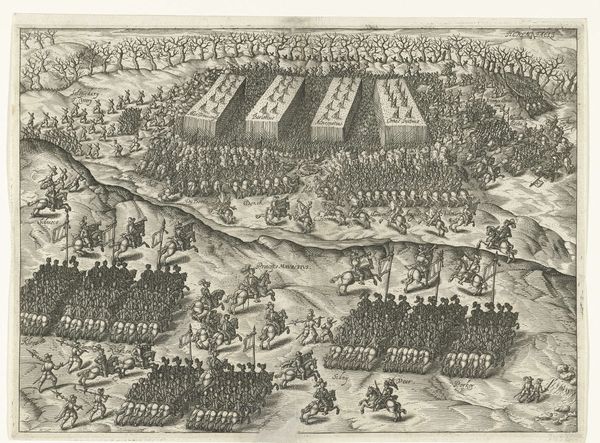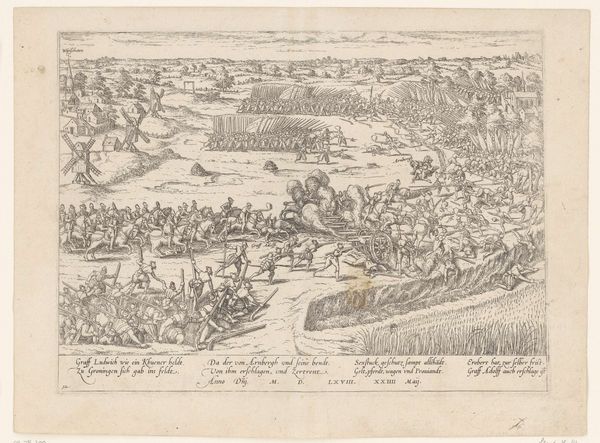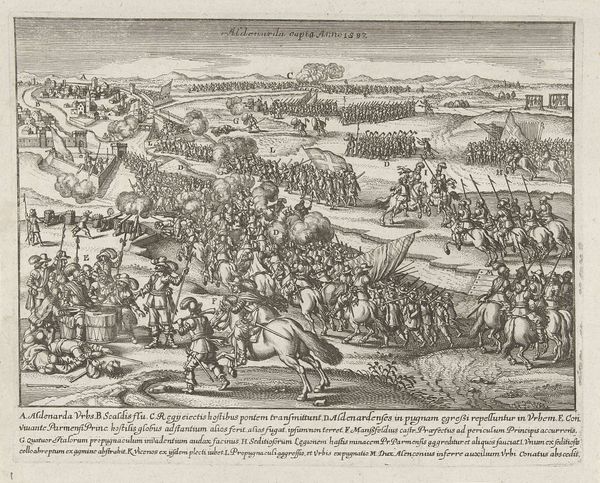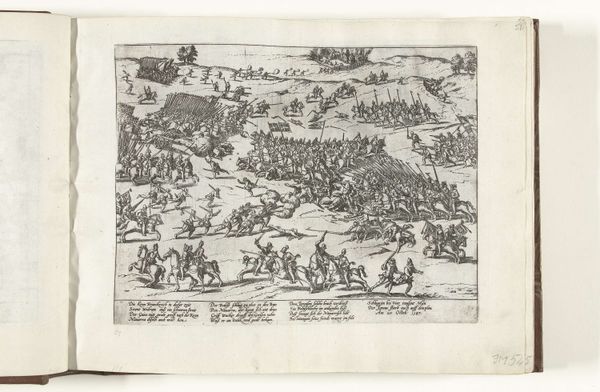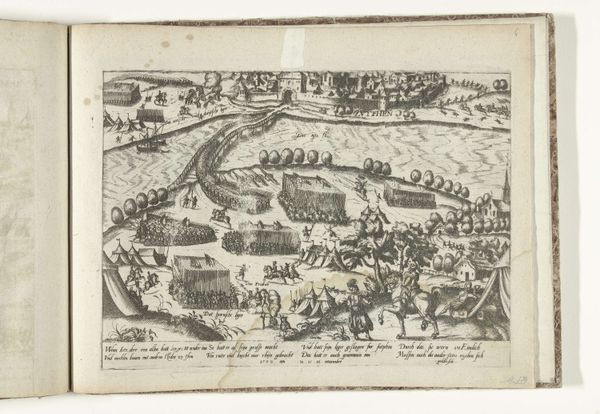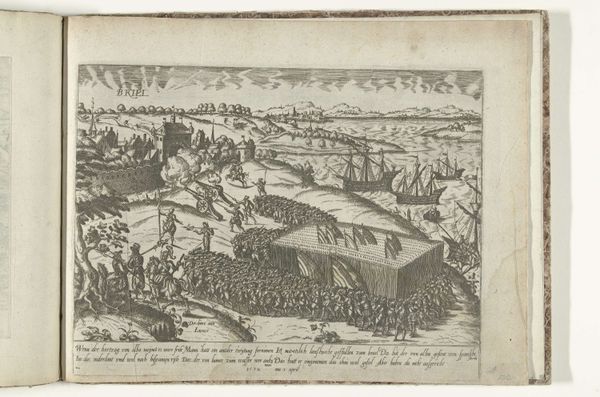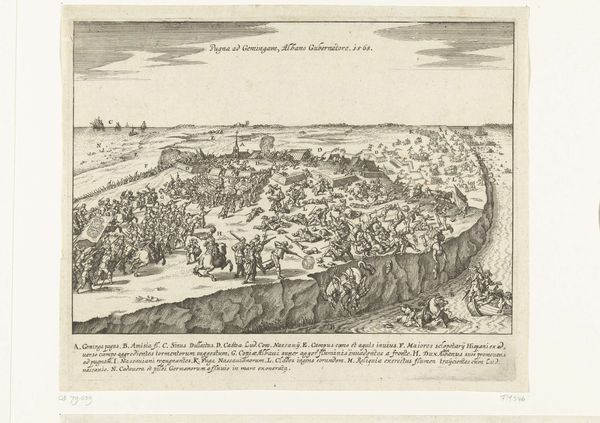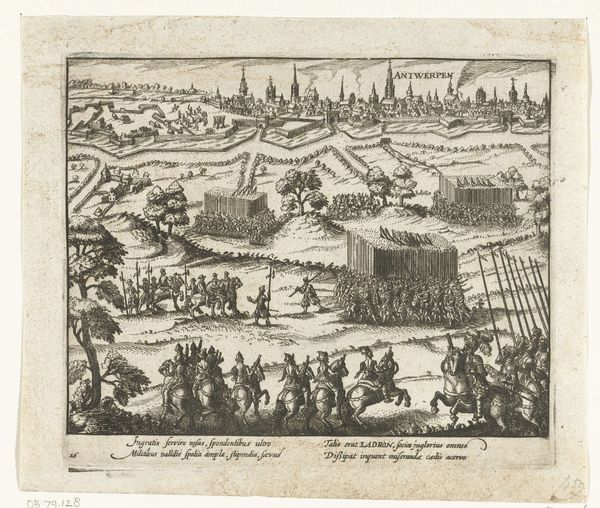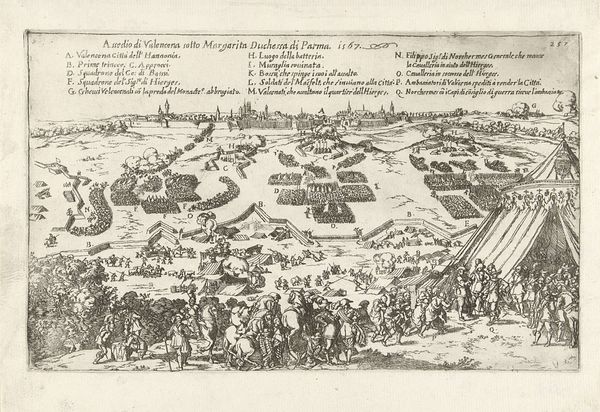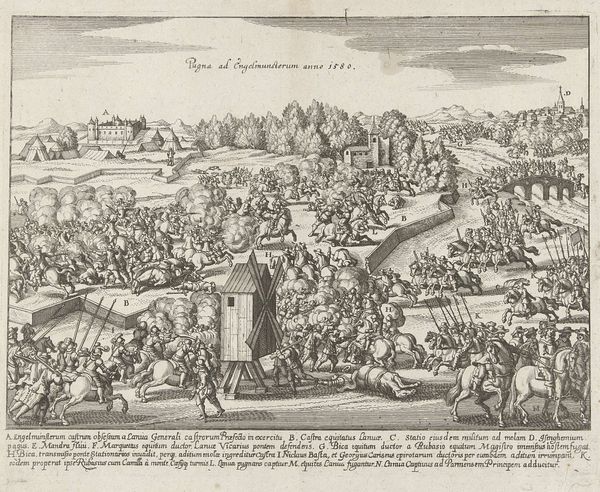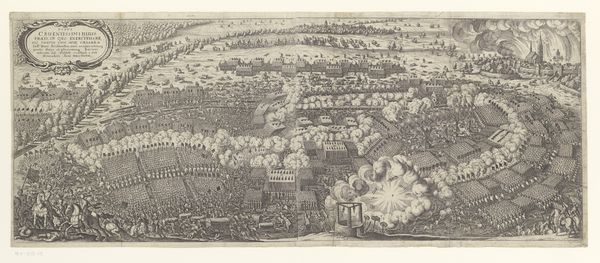
print, engraving
#
medieval
# print
#
old engraving style
#
landscape
#
figuration
#
form
#
line
#
history-painting
#
engraving
Dimensions: height 246 mm, width 338 mm
Copyright: Rijks Museum: Open Domain
Editor: This is "The Emperor Surrounded by the Turks," an engraving by Frans Hogenberg from 1574-1578, housed in the Rijksmuseum. The detail is incredible, though it definitely has a somewhat chaotic feel. What jumps out at you? Curator: What I see is a meticulously crafted object embedded with social tensions. Hogenberg’s choice of engraving—a reproducible medium—immediately signals its intended wide distribution and, consequently, its role in shaping public opinion. Consider the material labor involved in producing multiple copies of this image and who the consumers were. Editor: That's a great point, I didn't consider that engraving allowed for widespread distribution. Was that common at the time? Curator: Precisely! Think about it: engraving, unlike painting, democratized visual information. Now, who controlled the copper? Who profited from the printing? Who wrote the text below? And who had the money to purchase it? These questions reveal the complex web of economic and social relationships embedded within the printmaking process and consumption. How does knowing this informs your appreciation of it? Editor: I guess, viewing it through that lens makes it feel less like a simple historical depiction and more like a deliberate piece of propaganda, almost a manufactured narrative pushed onto the masses. Curator: Exactly. And that “manufactured narrative” then impacts subsequent events, public sentiment. It also encourages further such exploitations of media in service of colonial objectives. Consider the way the ‘Turks’ are othered, demonized via artistic depiction - what effect might this have on popular opinions of this ‘enemy?’ The very act of depicting this event through a relatively accessible medium has consequences far beyond the image itself. It informs the trajectory of human action and the shaping of geopolitical futures. Editor: It’s really interesting how shifting the focus to the production and distribution methods changes how we understand the image itself, and it’s relevance today. Curator: Absolutely. Seeing the artwork through a materialist lens provides us a far richer understanding than considering just aesthetics or composition alone, as those factors are secondary to this form's social purpose.
Comments
No comments
Be the first to comment and join the conversation on the ultimate creative platform.
